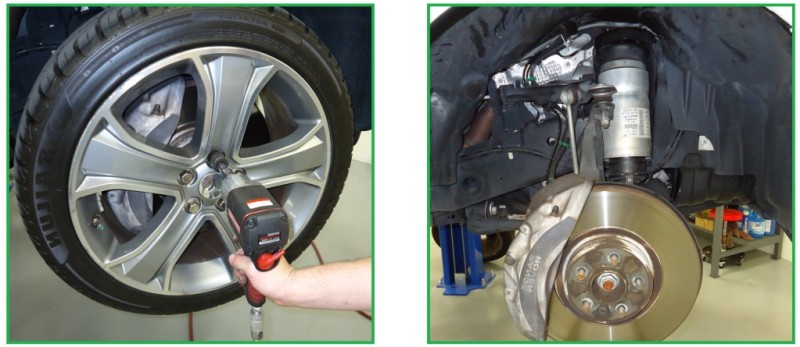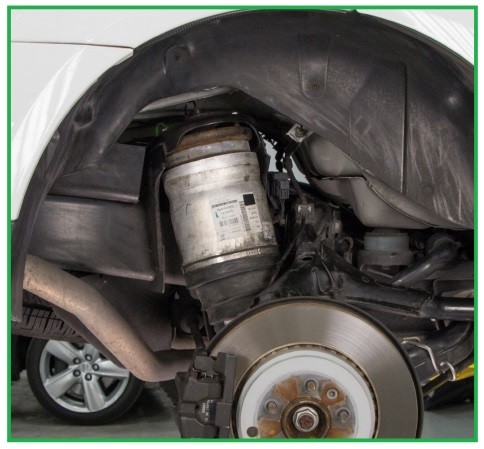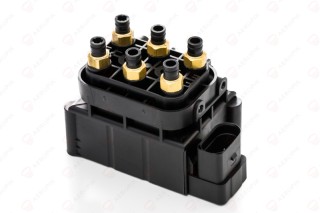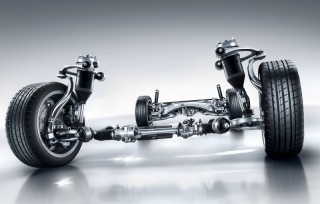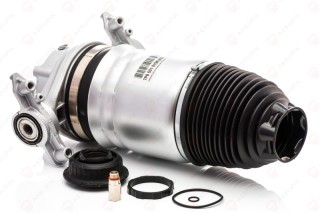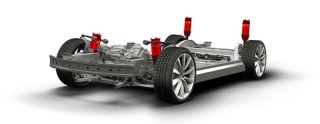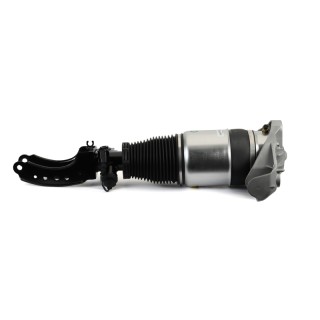Winter safety check

Changing tires is a great time to check the air suspension system
Winter safety check
As Christmas approaches, the season changes from fall to winter. As temperatures drop during the winter season, a reliable car is required to ensure you and your family are safe on the roads. In preparation for the colder climate, many owners take their car to a service center just before the start of winter for a tire change, a roadworthiness test to prepare for the cold and changing road conditions.
A common task during this inspection is to change from summer to winter tires, providing more traction and stability in this colder period of rain and snow. Changing tires is a great time to check the air suspension system. With the wheels off it is easy and convenient to check the condition of the airbags and shock absorbers as part of a routine winter inspection.
What should I check?
It is important to check that all components are still in good technical condition. If the car drops more than 2.5 cm overnight or is sometimes lower on either side, further inspection is required.
As with many vehicle components, weather affects the performance and lifespan of air suspension parts. If small cracks are detected during the winter inspection, it is reasonable to replace the air spring. At low temperatures, the air spring rubber becomes slightly harder and less flexible. As an aging tire begins to form micro cracks, the low temperature can cause a flat, leaving the car with damage on the road.
An existing leak can be detected by spraying the components with soapy water. If you see bubbles appearing, you know there is a leak. However, be aware - not all leaks are easy to detect. A leak can also be located on the deployment edge of the air spring, which is not visible at normal ride height. Be sure to also check the shocks absorbers for oil leaks and excessive rust.
Also check the condition of the rubber air intake hose on the air suspension compressor. The combination of low temperatures and vibration can cause the hose to crack. Such damage causes the compressor to suck in moisture and dirt instead of clean filtered air. When this goes undetected for too long, it has significant consequences on the performance of the air suspension system. Too much moisture in the system can cause oxidation and problems in the valve block. Accumulated moisture can freeze. A faulty valve block will prevent the vehicle from leveling off and a fault code will be displayed on the dashboard. The filter that cleans the intake air is also of particular importance to the trouble-free operation of the compressor. Usually after years of driving on dusty roads, this filter starts to clog and reduce the air flow that the supercharger needs to run properly. A complete blockage results in fatal compressor failure as it runs but has nowhere to get air to pressurize the air suspension system. It's a good idea to replace this small, low-cost item prophylactically to avoid possible future damage.
Result
Taking advantage of the ability to check air suspension components during a winter inspection or tire change will benefit the car owner. By carrying out these quick checks, safe driving can be ensured and (expensive) subsequent damage such as a blown compressor can be avoided. So, every time you change tires, check the air suspension components!

